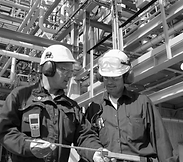Engineering and Technology Quarterly Reviews
ISSN 2622-9374




Published: 03 June 2022
An Evaluating of the Broader Economic Benefit of the Medan-Binjai Toll road on National Highway Performance
Ridwan Anas, Irwan S. Sembiring, Ika Puji Hastuty
Universitas Sumatera Utara, Indonesia

Download Full-Text Pdf
10.5281/zenodo.6604776
Pages: 25-31
Keywords: Economic Benefit, Traffic Diversion, Road Performance, Remaining Service of Life
Abstract
The development of toll roads provides a number of improved services to the road users, connectivity, and their existence can promote the equitable development of a region. The use of toll roads has a variety of impacts on economic issues. The quality of pavement gradually declines along with the increase in pavement service ages and heavy traffic load. After toll operated, over the years the number and characteristics of traffic on national highway have changed. The impact of diverting traffic from the national highway route, will reduce the traffic congestion and improve pavement performance. This paper presents a case study of the wider impact of the toll road investment based on national highway pavement performance and remaining service of life. A scenario is provided to distinguish the traffic diversion from national highway. The imposing toll road would increase the remaining service life of the national highway performance for approximately 6 years from the initial design. Medan-Binjai toll road investment provided high-quality of transport system and on other hand gained a wider benefit for saving the national highway preservation’s budget.
References
Abaza, Khaled A. (2004). Deterministic performance prediction model for rehabilitation and management of flexible pavement. The International Journal of Pavement Engineering, 5 (2), https://doi.org/10.1080/10298430412331286977.
American Association of State Highway and Transportation Officials (1993). AASHTO Guide for design of pavement structures.
Gedafa, D. S. (2008). Estimation of remaining service life of flexible pavements from surface deflections. Kansas state university, Manhattan, KS.
Hajj, E., L. Loria, and P. Sebaaly (2010). Performance evaluation of asphalt pavement preservation activities. Transportation Research Record: Journal of the Transportation Research Board, https://doi.org/10.3141%2F2150-05.
Hamdi, Sigit, P. Hadiwardoyo, Correia, A. Gomes, and Pereira, Paulo, (2015). Road deterioration analysis for the national roads of Indonesia. [Paper presentation].the 14th International Conference on QIR (Quality in Research), Lombok.
Kaare, K. K. and Koppel, O. (2012). Performance indicators to support evaluation of road investments. Journal of Economic Literature, https://doi.org/10.15157/tpep.v20i2.832.
Lozano, Angélica, Granados, Francisco, Guzmán, Alejandro, (2014). Impacts of modifications on urban road infrastructure and traffic management: a case study. Procedia - Social and Behavioral Sciences, https://doi.org/10.1016/j.sbspro.2014.12.218.
Lubis, HA, Isnaeni, Muhamad, Sjafruddin, Ade, Dharmowijoyo, Dimas, B. (2005). Multimodal transport in Indonesia: recent profile and strategy development, [Paper presentation] The Eastern Asia Society for Transportation Studies, Vietnam.
Mohmand, Yasir, Tariq, Wang, Aihu, Saeed, Abubakr (2016). The impact of transportation infrastructure on economic growth: empirical evidence from Pakistan. Transportation Letters: The International Journal of Transportation Research, https://doi.org/10.1080/19427867.2016.1165463.
Singh, Y. Kumar, and Ray, D. S. (2019). Evaluation of vehicle damage factor in overloading for different types of loading, International Journal of Engineering Science and Computing.
Syafriana, Saleh Sofyan, M., Anggraini, Renni (2015). Evaluasi umur layan Jalan Dengan memperhitungkan beban berlebih di ruas jalan lintas timur Provinsi Aceh, Jurnal Transportasi, 15 (2): https://doi.org/10.26593/jtrans.v15i2.1729.%25p.
World Bank (2013). State of Logistic Indonesia.
Yang, Yong-honga, Jiang, Yuan-haob, Wang, Xuan-cang (2016). Pavement performance prediction methods and maintenance cost based on the structure load. Procedia Engineering, 137, https://doi.org/10.1016/j.proeng.2016.01.232.



